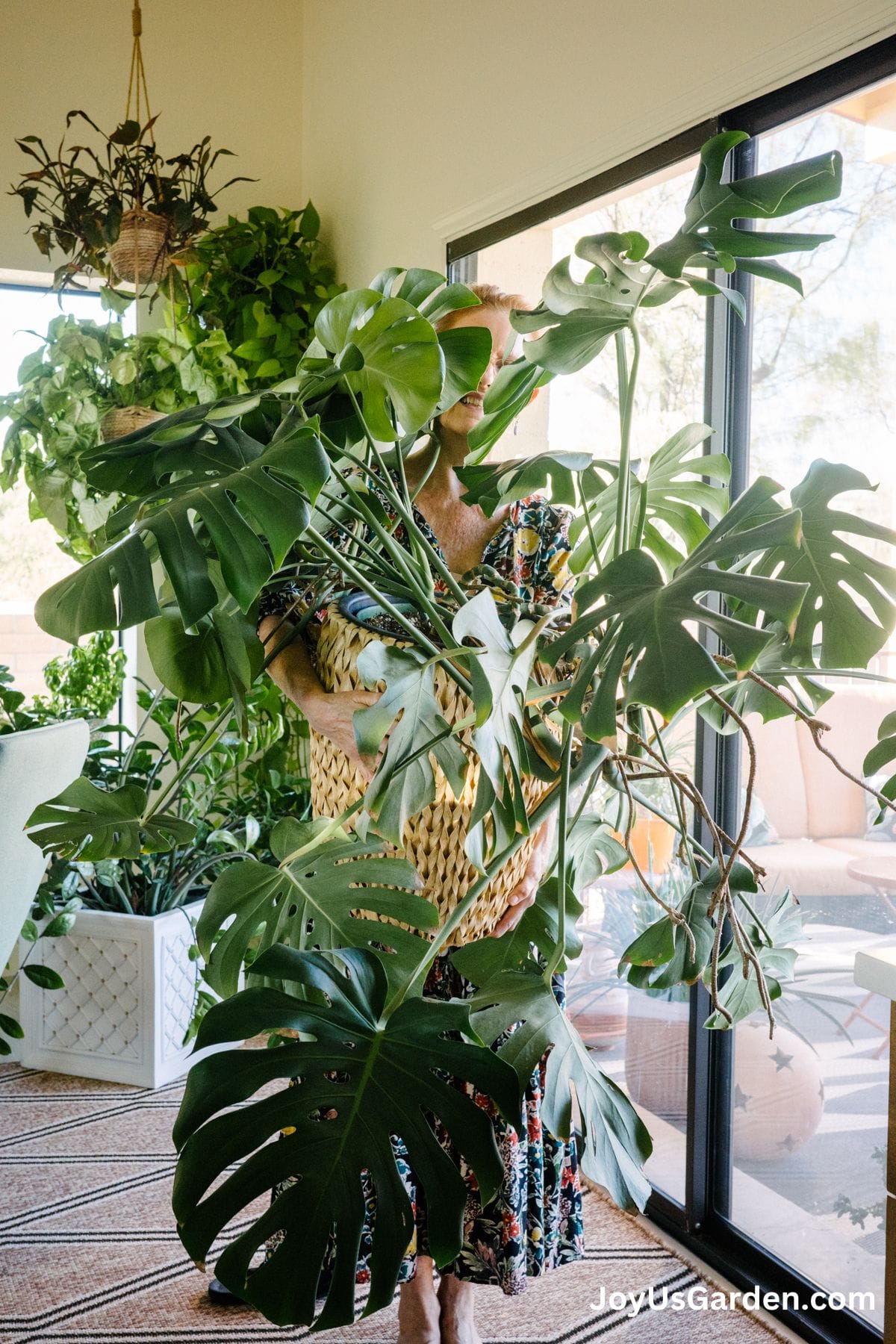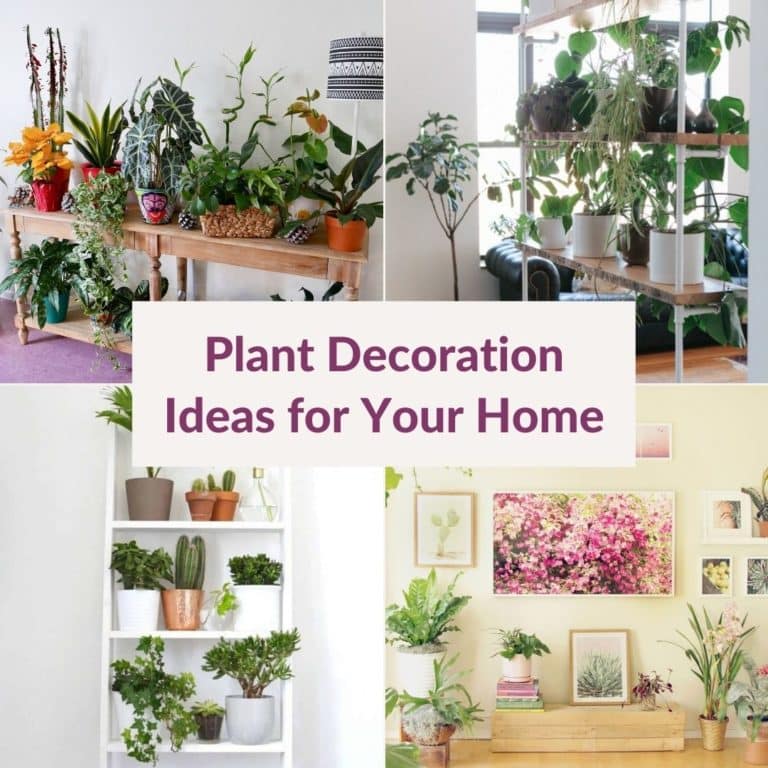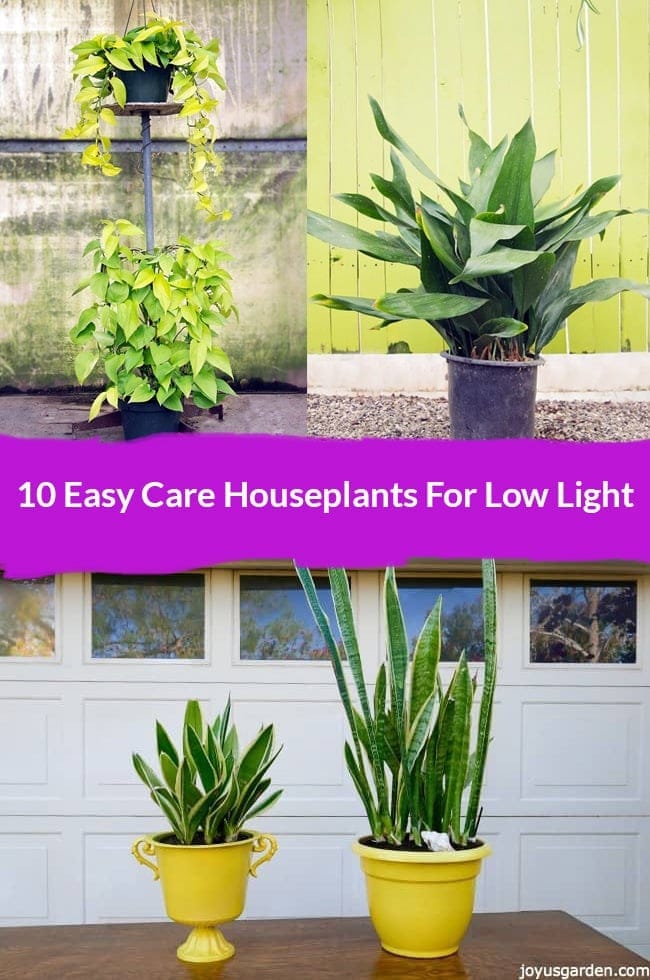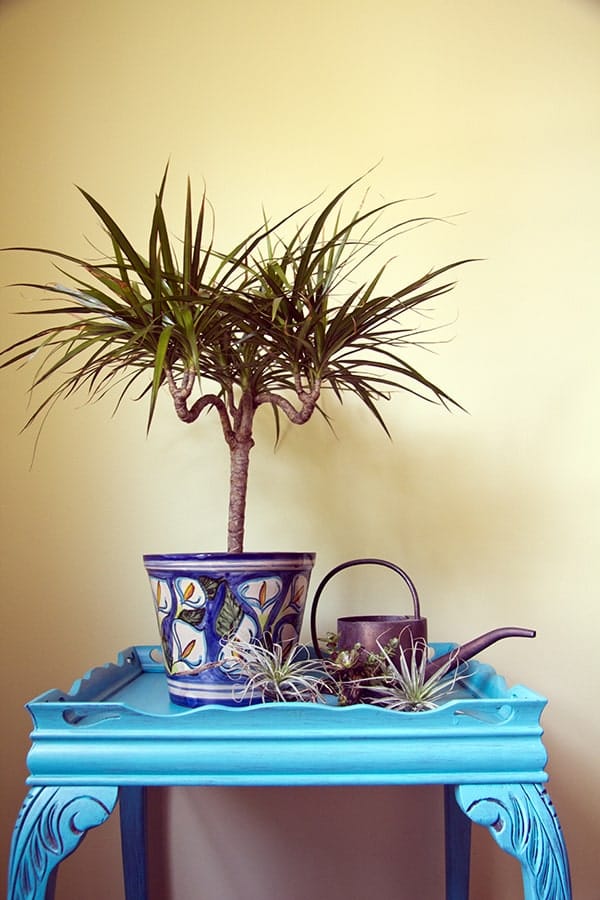MONSTERA DELICIOSA CARE: How To Grow Swiss Cheese Plants
Hello, flip-flops, coconuts, and fruity drinks with umbrellas! If you want your home to have a tropical feel, plan on picking up one of these jazzy plants. The distinctive leaves are enormous, and the plant spreads as it grows. Learn all about Monstera deliciosa care, including tips and things good to know so you can keep your leafy beauty thriving and looking great.
These plants were popular many years ago but fell out of the limelight. Now, they’ve come back with a vengeance, and rightfully so. There are many species and varieties of Monstera plants on the market. You basically care for them all the same except for the variegated ones, which need a bit more light to keep their beautiful markings.
- Botanic Name: Monstera deliciosa
- Common name: Monstera (Swiss Cheese Plant, Split-Leaf Philodendron, Cut Leaf Philodendron & Mexican Breadfruit)
Monstera Deliciosa Traits
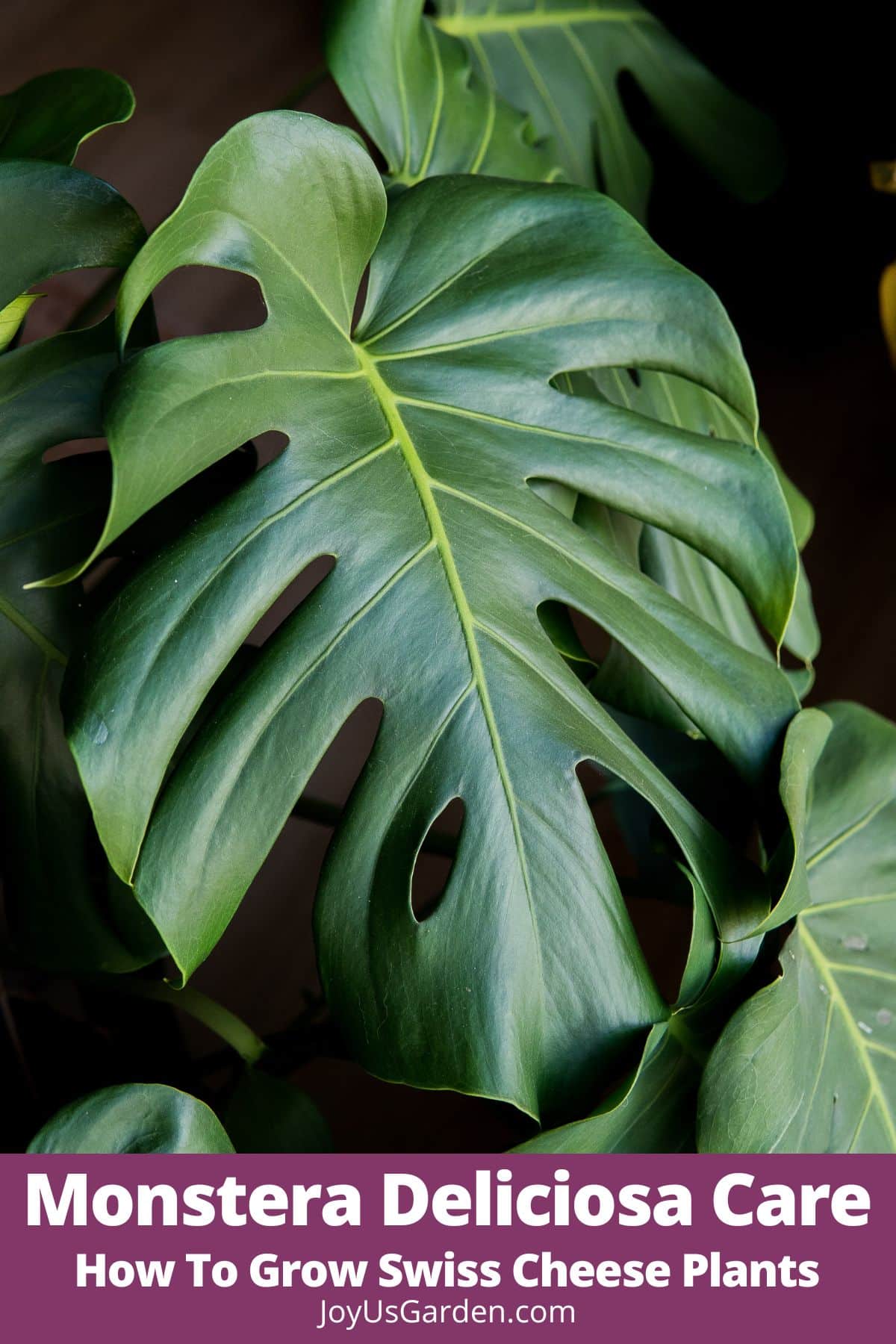
Uses
They’re tabletop plants when young (mine started growing on a table).
As they grow, these Monsteras get taller and wider and become floor plants (like mine is now). Widthwise, know that they need space.
Size
They’re commonly sold in 6″, 8″, 10″, and 14″ pot sizes. Because the leaves are so big, the larger the pot size, the wider the plant is. The tallest I’ve seen one in a home is 6′ tall by roughly 5′ wide. You may see them trained to grow up a piece of wood or moss pole or wooden stake.
Mine currently grows in a 10″ grow pot and stands 36″ tall by 48″ wide. You can see me holding it in the photo below.
Monstera Growth Rate
Moderate to fast – these are vigorous and strong growers. I live in Tucson, AZ, with a lot of sunshine and warm temps for 7-8 months of the year. Mine grows fast.
Like all houseplants, the growth slows way down in the cooler months. And, the lower the light conditions, the slower the growth rate will be.
Monstera Deliciosa Care Guide
Monstera Light Requirements
They prefer bright light—a moderate exposure. Near but not in a window is good unless it’s north or east-facing. Too much light will cause burn.
Monsteras are epiphytic like orchids and bromeliads. In their natural habitat, they’re classified as evergreen climbing vines. They grow up trees and along the ground under the cover of other plants.
If the light is too strong (like a hot, west exposure close to a window), it’ll cause the leaves to scorch, which will show up as brown marks. Having one in dappled sunlight is fine.
My Monstera grows in bright indirect light in front of a north-facing picture window in my living room. There are south-facing windows on the other side of the room, and my many plants do well here.
Monsteras tolerate low light conditions but won’t grow much. And you’ll see leggy growth. If you have one of the variegated Monstera deliciosas, it’ll need moderate light to bring out and keep the variegation.
You may have to move yours to a brighter spot as the light changes in the winter months. Rotate it if need be so the light hits it on all sides.
Monstera Watering
I water my 10″ Monstera when the planting mix is about 3/4 of the way dry. That tends to be every 7 to 9 days in the warmer months and every 14 to 18 days when winter comes around.
Yours may need to be watered more or less frequently than mine, depending on the pot size, the type of soil it’s planted in, the location where it’s growing, and your home’s environment.
Monsteras have thick roots (and quite a few of them), so be sure not to overwater yours. This will lead to root rot, and the plant will eventually die. It’s best if the pot has drainage holes on the bottom so the excess water can flow out.
Two things: don’t water yours too often (it’s an epiphyte, after all), and back off on the frequency in the winter.
I’ve done a guide to watering indoor plants that you might want to check out.
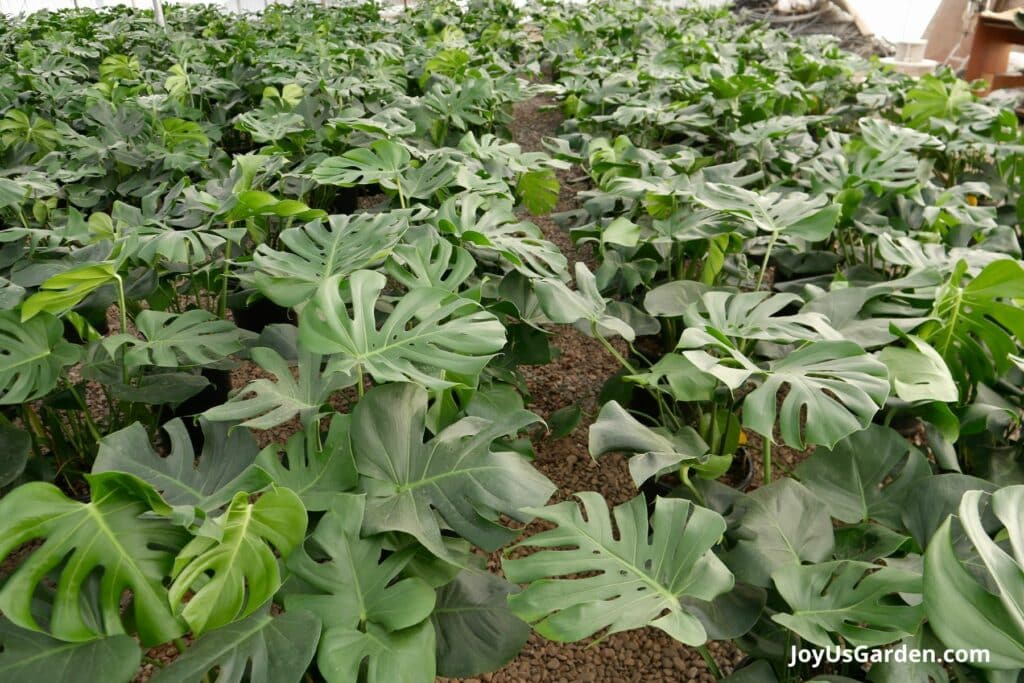
Temperature
If your home is comfortable for you, it’ll be so for your houseplants, too. Monsteras prefer warmer temps in the growing months and cooler in the winter when growth has slowed.
Keep them away from cold drafts and air conditioning or heating vents.
Humidity
Like all plants native to tropical rainforests, Monsteras love a humid environment. They’re native to the rainforest regions, after all. If your leaves show tiny brown tips, that’s a reaction to the dry air in our homes. Even though I live in hot, dry Tucson, mine isn’t showing too many brown tips.
Every few months, I take my Monstera outside and spray the foliage (just like a tropical rain shower!). It also keeps the dust from building up on the foliage, hindering its breathing process.
I have a humidity meter in my dining room. I run my humidifiers at night when the humidity reads low, often in the Arizona desert!
If you think your Monstera looks stressed due to lack of humidity, fill the saucer that sits under it with pebbles and water. Put the plant on the pebble tray, but make sure the drain holes and/or the bottom of the pot aren’t submerged in any water.
Misting a couple of times a week will help.
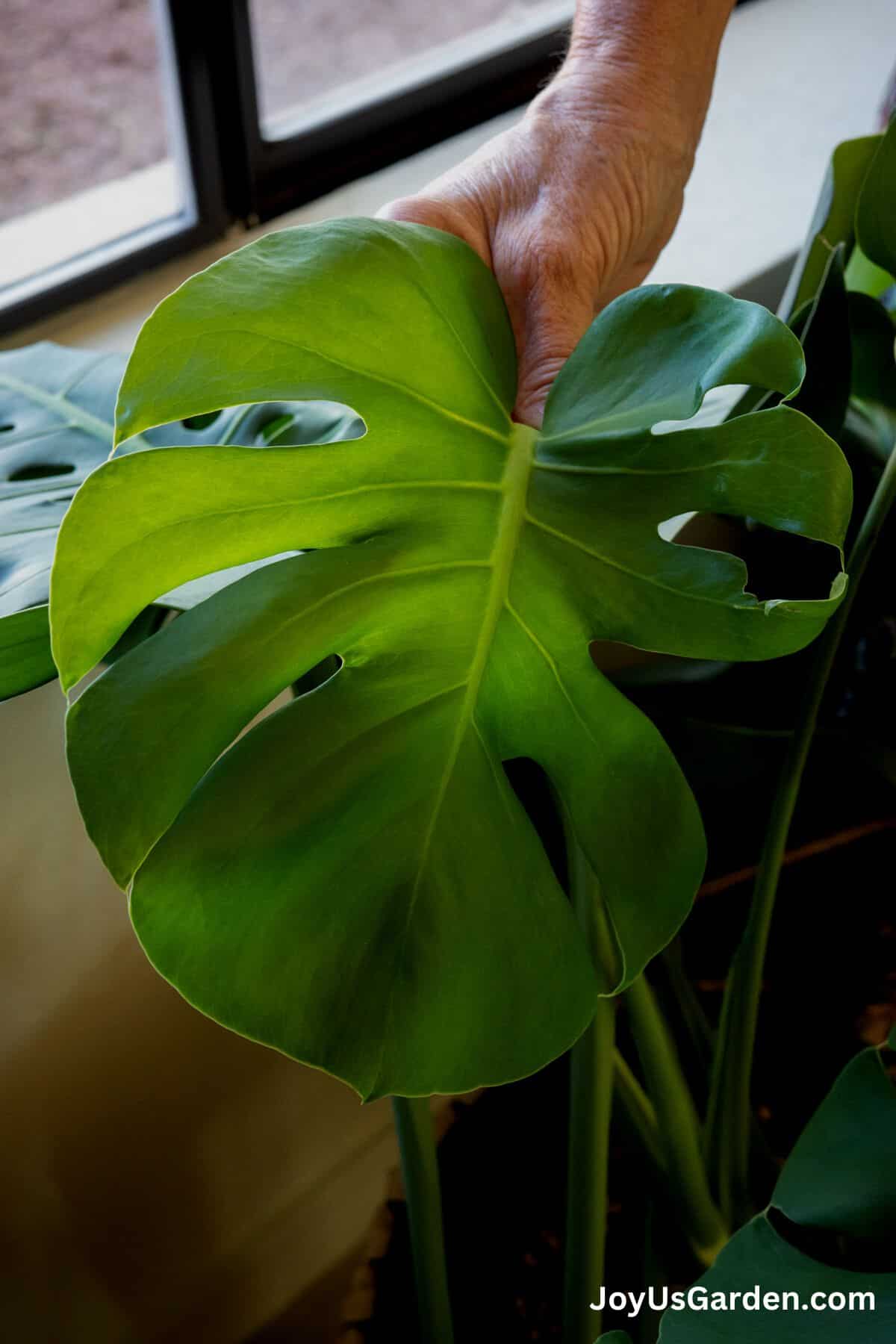
Fertilizing/Feeding
Spring and summer are the best times to feed your indoor plants. Early fall is fine if you’re in a temperate climate like me.
We have a long growing season in Tucson, from mid-February through October. I fertilize my Monstera with Maxsea or Sea Grow, Grow Big, and & Liquid Kelp seven times during the growing season. It’s how I feed all my tropical plants. I alternate using these granular and liquid fertilizers and don’t mix them.
Fertilizing too often will do more harm than good. Depending on your climate and growing zone, feeding two or three times a year may do it for your indoor plants.
Whatever houseplant food you choose, don’t use more than the recommended amount because minerals build up and can burn the plant’s roots. This will show up as brown spots and/or brown tips on the leaves if you fertilize too often or use too high a ratio.
You want to avoid fertilizing any stressed houseplant, i.e., bone dry or soaking wet. I don’t fertilize houseplants in late fall and winter because it’s not their active growing season.
Every other spring, I give most of my houseplants a light application of worm compost with a light layer of compost. Easy does it – a 1/4 ” layer of each is enough for a 6″ houseplant. Read about my worm compost/compost feeding right here.
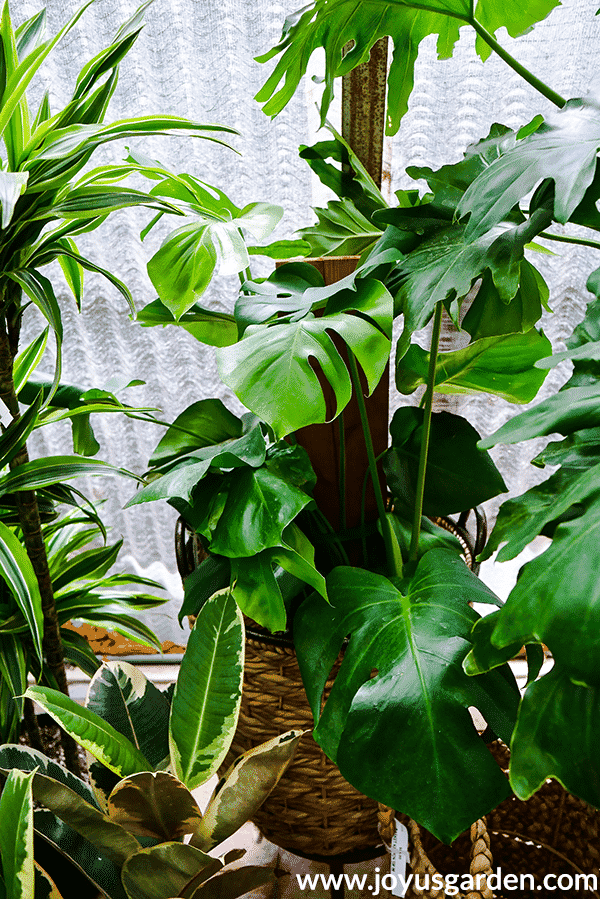
You can train your Monstera to grow up a piece of wood like you see here.
Monstera Support Ideas
This is a vining plant in its native habitat. Mine is hitting the floor and in need of support. I’ll use a piece of wood similar to this for it to climb up. I’ll also use sphagnum moss to give those roots growing along the stem something to grow into. I’ll do a post and video in a few months to show you.
You can also use a moss pole or a small trellis, depending on the size of your plant.
Soil
As for the mix, this plant likes rich, well-draining soil with a good amount of peat that is well-draining. This is the mix I use:
- 1/2 potting soil. I alternate between Ocean Forest & Happy Frog (& sometimes I mix them).
- 1/2 coco fiber. This is an environmentally friendly alternative to peat moss.
- I added a few handfuls of coco chips (similar to orchid bark) and a few handfuls of compost.
- I end by top dressing with a 1/4 1/2″ layer of a compost/worm compost blend.
I use Happy Frog and Ocean Forest because of their high-quality ingredients. These soilless potting mixes are enriched with lots of good stuff but also drain well. Epiphytes need good drainage because they grow on other plants, not in the ground.
There’s a list of alternative soil mixes in this post.
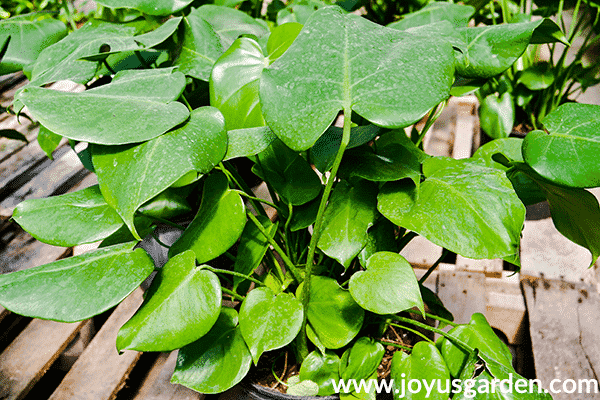
Repotting
The best time for repotting is spring and summer. Early fall is fine if you’re in a temperate climate. If you have to repot your plant in winter, no worries. It’s just not the optimum time.
Like all epiphytes, Monstera deliciosa plants like to grow slightly pot-bound. This plant is a vigorous and fast grower, so you’ll need to repot it every 2-5 years, depending on how it’s growing.
My Monstera grew wider and heavier in proportion to its grow pot. It tipped over and fell off the table, so I repotted it from a 6″ grow pot into a 10″ grow pot.
It needs repotting four years later, and I’ll do that next spring.
This post and video on Repotting A Monstera Deliciosa will give you more details on both repotting & soil.
Pruning
You’ll need to prune a Monstera to train or propagate it. Also, to take off any yellowing leaves.
These plants get straggly and rangy in low light, so you may need to prune them to shape them.
As your Monstera grows and gets dense, you can prune a leaf or two off for a flower arrangement. They’re long-lasting and very pretty when mixed with tropical flowers like bird of paradise, ginger, anthuriums, and orchids!
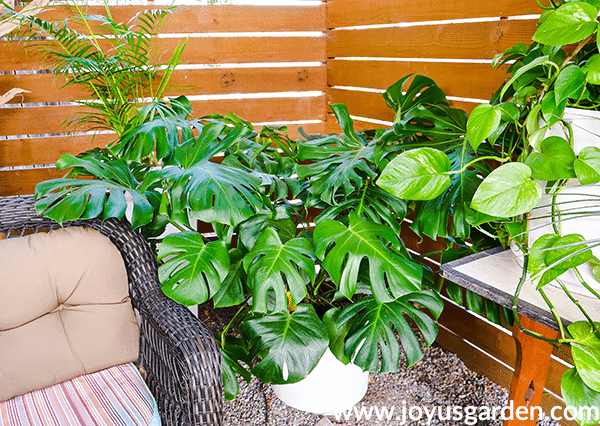
Barrel & Branches Nursery in North San Diego.
Propagation
A Monstera is a snap to propagate. You’ll see roots coming out of the nodes on the stems. Those are the start of the aerial roots used for anchoring their stems to other plants for support when growing in nature.
To propagate by stem cuttings, prune a stem right below a leaf node. Make sure your pruners are clean and sharp. They can then be put in water or a light mix to further root.
I’m going to prune my Monstera soon to propagate it. When the stems root, I’ll plant in with the mother plant and train them to grow up a piece of wood. Stay tuned for that post and video!
Another method of propagating a Monstera is by division, but it can be challenging if your plant is large.
Pests
My Monsteras have never gotten any pests. They can be susceptible to mealy bugs, scale, aphids, and spider mites, so keep your eyes open for these common pests.
Pests live inside where the leaf hits the stem and under the leaves, so check these areas occasionally.
It’s best to take action as soon as you see any pest because they multiply like crazy. Pests can travel from houseplant to houseplant fast, so make sure you get them under control pronto.
Cleaning
Any plant appreciates clean foliage. You can take a damp cloth soaked in castile soap and water (I use a tablespoon per quart of water) and wipe off the leaves. Or, hose it down outside or in the sink or shower.
Safe For Cats & Dogs
Several plants in the Araceae family, such as Monsteras, are considered toxic to pets. I consult the ASPCA website for my info on this subject to see in what way the plant is toxic.
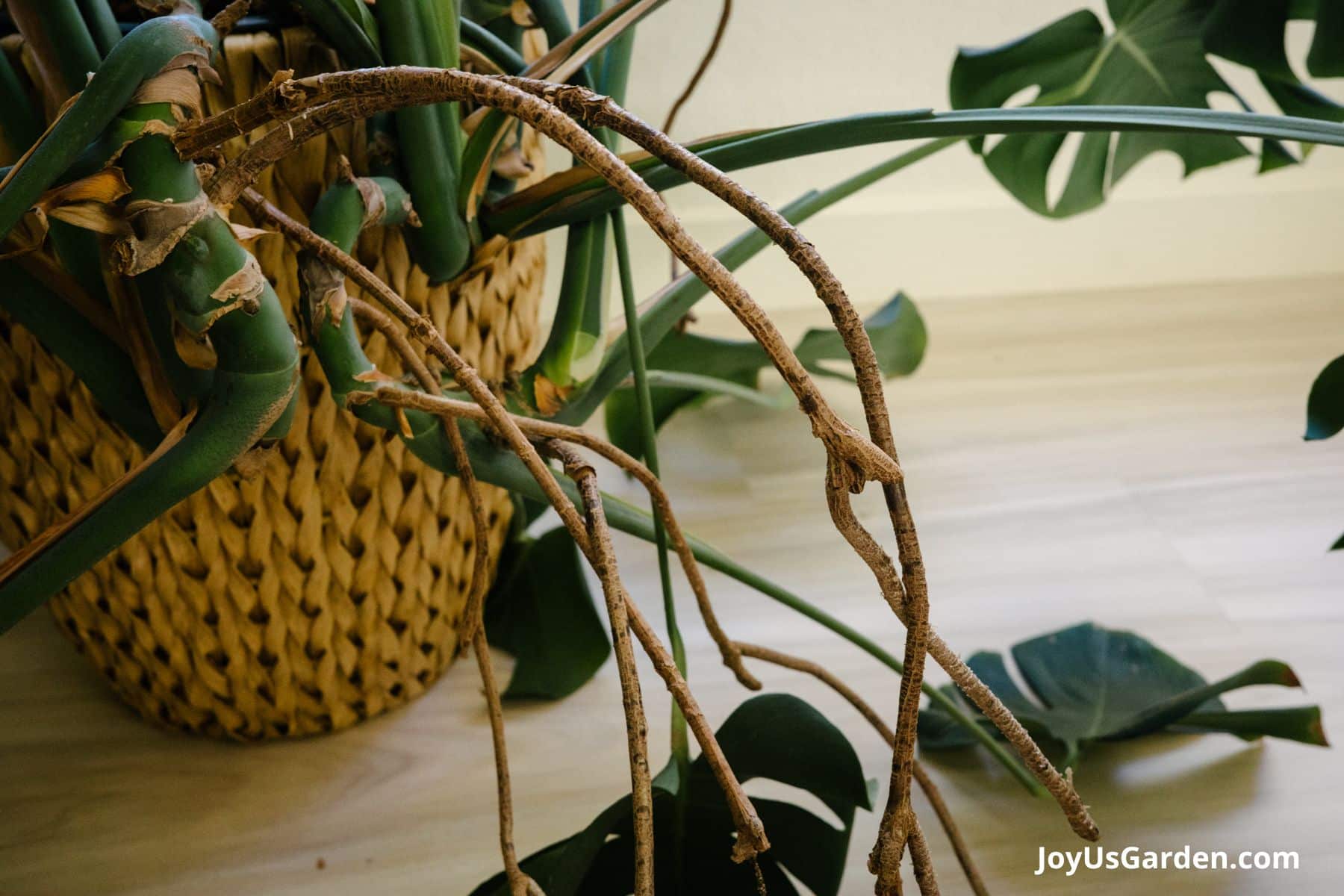
Roots
If you come across a Monstera growing in its native rainforest, you’ll see the long aerial roots coming off the stems, some touching the ground. One of their purposes is a means of attachment to climb up other plants.
As your Monstera growing indoors gets older, it’ll put out these roots. If you want to train yours to grow up a piece of wood with sphagnum moss or a moss pole, they are how the plant attaches. You’ll need to secure the stem with twine or something similar to get it going, but after that, it’ll attach on its own
If the aerial roots bother you, trim them or prune them off. It won’t hurt the plant.
Flowers
Swiss Cheese Plants flower and produce edible fruit, but it’s uncommon when growing indoors. They have a typical aroid flower and look like this.
Some Of Our General Houseplant Guides For Your Reference: Guide To Watering Indoor Plants, Beginner’s Guide To Repotting Plants, How to Clean Houseplants, Winter Houseplant Care Guide, Plant Humidity: How I Increase Humidity For Houseplants, Buying Houseplants: 14 Tips For Indoor Gardening Newbies
Video Guide
Common Questions about Monstera Deliciosa Care
This will happen as the plant ages. You must train it using support so those aerial roots have something to attach to. You can use a moss pole, a piece of wood with sphagnum moss, for it to grow up.
I’ve never tried. Monsteras have huge leaves, a vigorous growth habit, and get big over time. You can tip prune yours as it grows to contain the growth a bit, but you won’t be able to keep it small. Many other indoor plants stay small or are easy to keep small, so another plant choice is the solution.
I’ve lightly pruned one to keep it in shape, but I’ve never cut one all the way back. I think you could aggressively cut it back by 1/2 to 1/3 if yours has gotten out of shape or is rangy. Mine is dragging on the floor, so I’ll prune it for propagating and training next year. I’ll do a video and post for you, illustrating what I do.
A Monstera likes bright natural light but no hot, direct sun hitting its gorgeous leaves. Indirect sunlight or a bit of morning sun is fine. Too much hot, direct sun and the foliage will burn.
There are several reasons why leaves on a plant could be turning yellow. If it’s an occasional leaf (especially the lower ones), that’s just the natural growth habit. The most common reasons are over or under-watering, a nutrient deficiency, a pest infestation, or lack of light. Overwatering (i.e., watering too often) is usually the issue!
I can tell you when I water mine with success. I wait until the mix it’s growing in is about 3/4 of the way dry, and then I water. In summer, it’s every 7-9 days. It’s every 14-18 days in the cooler, darker winter months.
Monsteras love high humidity levels, so mist away. Don’t let the leaves stay wet for too long when the temps are cool.
You can. I could have divided my plant into three when it was smaller. I would have used a sharp, clean knife to cut the stems and roots apart, making sure each stem had roots growing off of it. Since my plant has gotten so much bigger, dividing it would be more challenging and trickier.
Yes. You can also trim them. When growing as a houseplant, this won’t hurt the plant.
It can grow outdoors in the garden or a container in the warmest climates. You can bring your Monstera outdoors in the summer, but make sure it isn’t exposed to any direct, hot sun.
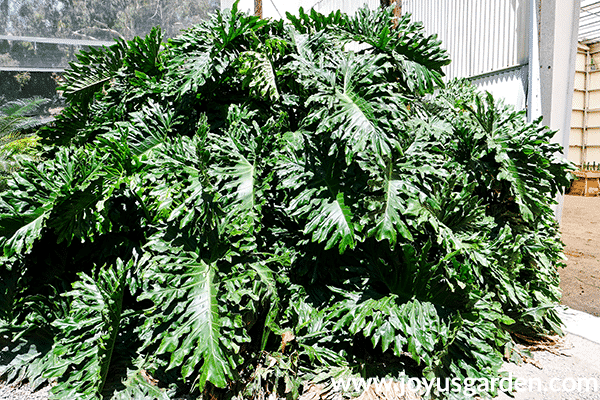
Conclusion: This plant will “jungle up” your home like no other indoor plant, especially as it grows. The leaves get showier with age, and the plant gets wider and taller. Monstera deliciosa care is easy. To have one thrive, keep it in moderate light and water when the mix is about 3/4 dry. Enjoy your jazzy Monstera!
Happy gardening,

